Physical Address
304 North Cardinal St.
Dorchester Center, MA 02124
Loss of cell–cell adhesion
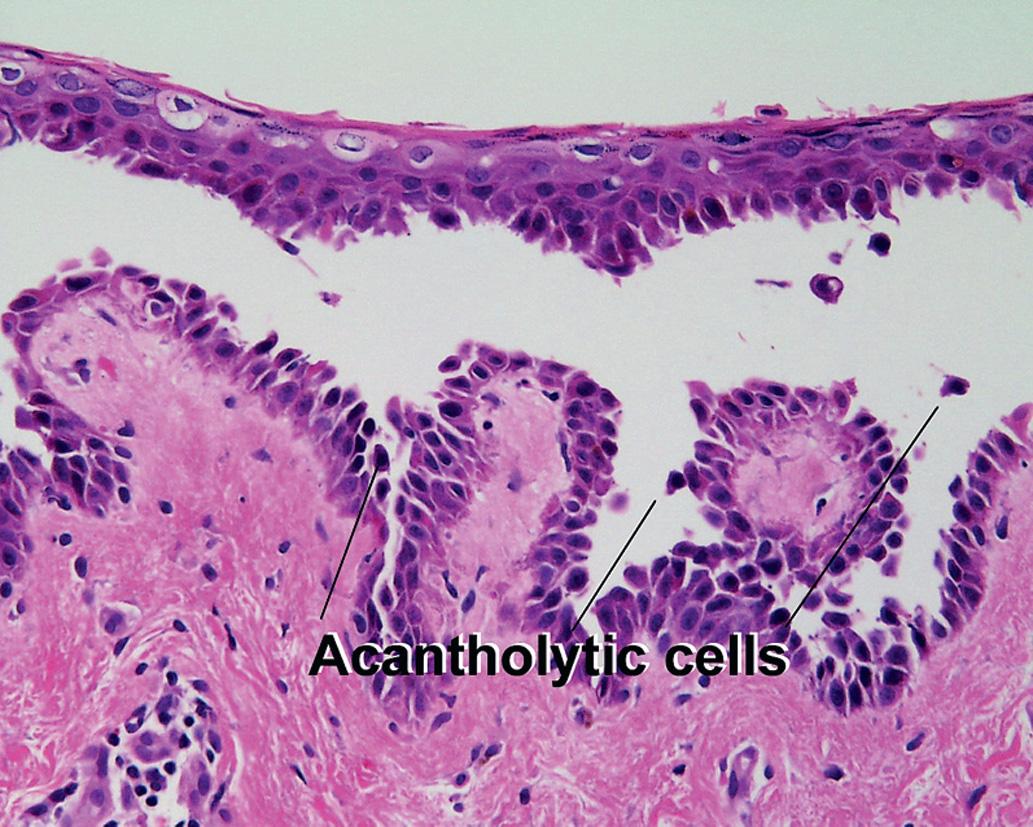
Increase in thickness of the epidermis
Regular (all rete pegs descend to the same level) or irregular (rete pegs descend to different levels in the papillary dermis)
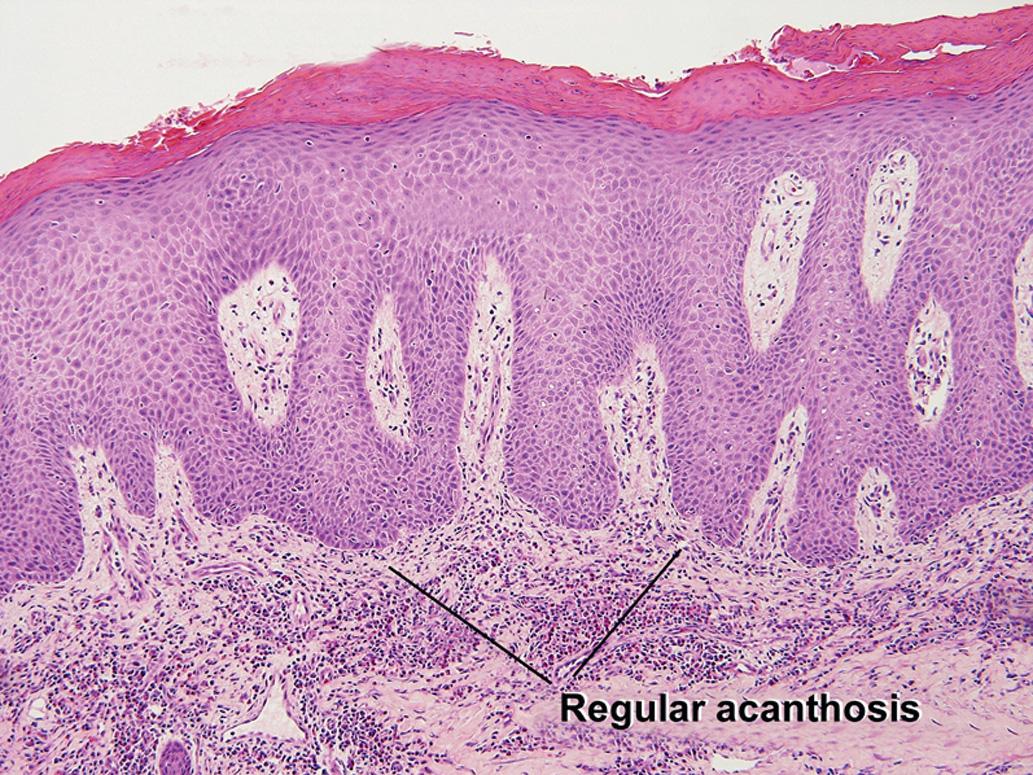
Atypical nuclei (abnormal size, shape, staining) and pleomorphism (variation in nuclear characteristics)
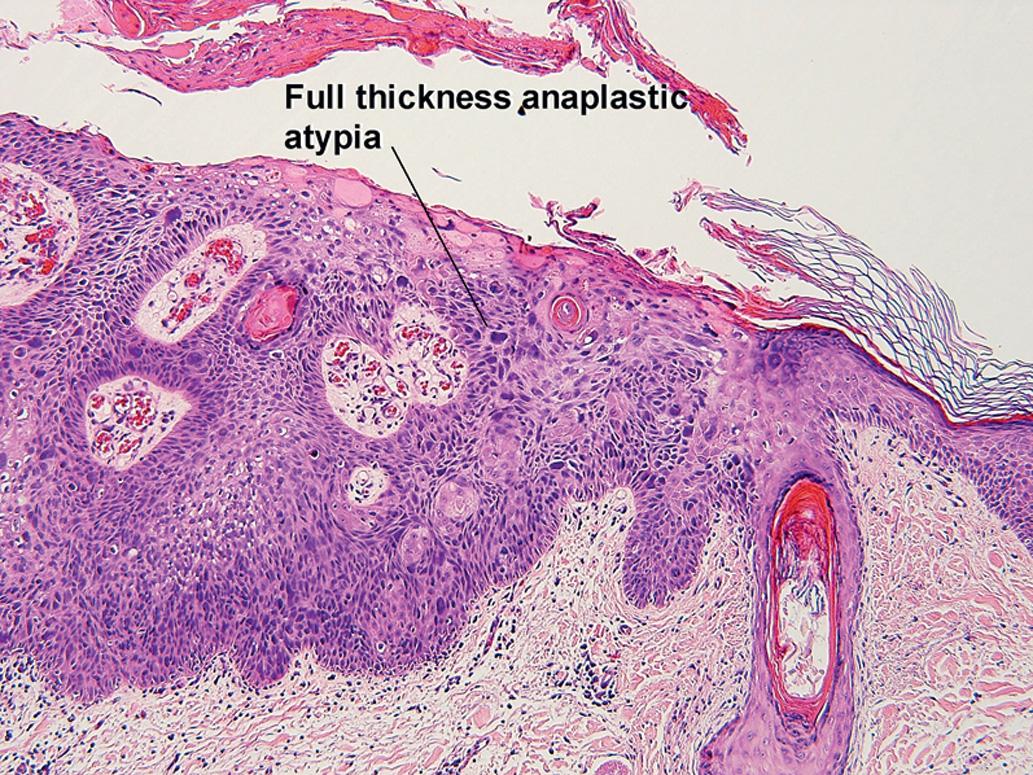
“Programmed cell death”
“Dead red” keratinocytes with pyknotic nuclei
Although the term is often applied to any necrotic or dyskeratotic keratinocyte, it is best reserved for physiologic programmed cell death or pathologic processes that produce death through a similar pathway
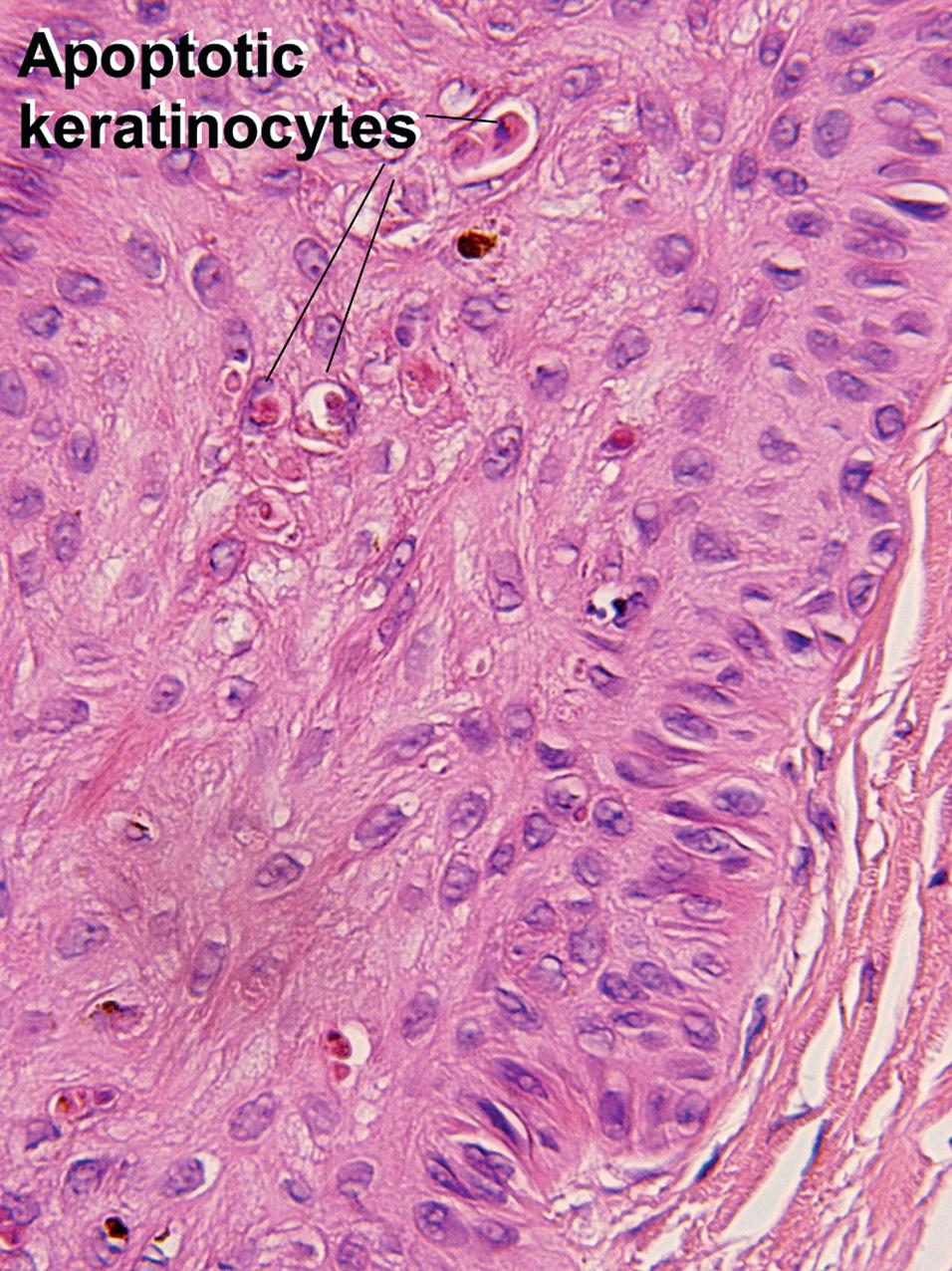
Branching, often refers to rete or vasculature
Collections of eosinophilic material seen in sporotrichosis
Also refers to star-shaped intracytoplasmic inclusions seen in giant cells of sarcoidosis or berylliosis or other granulomatous processes
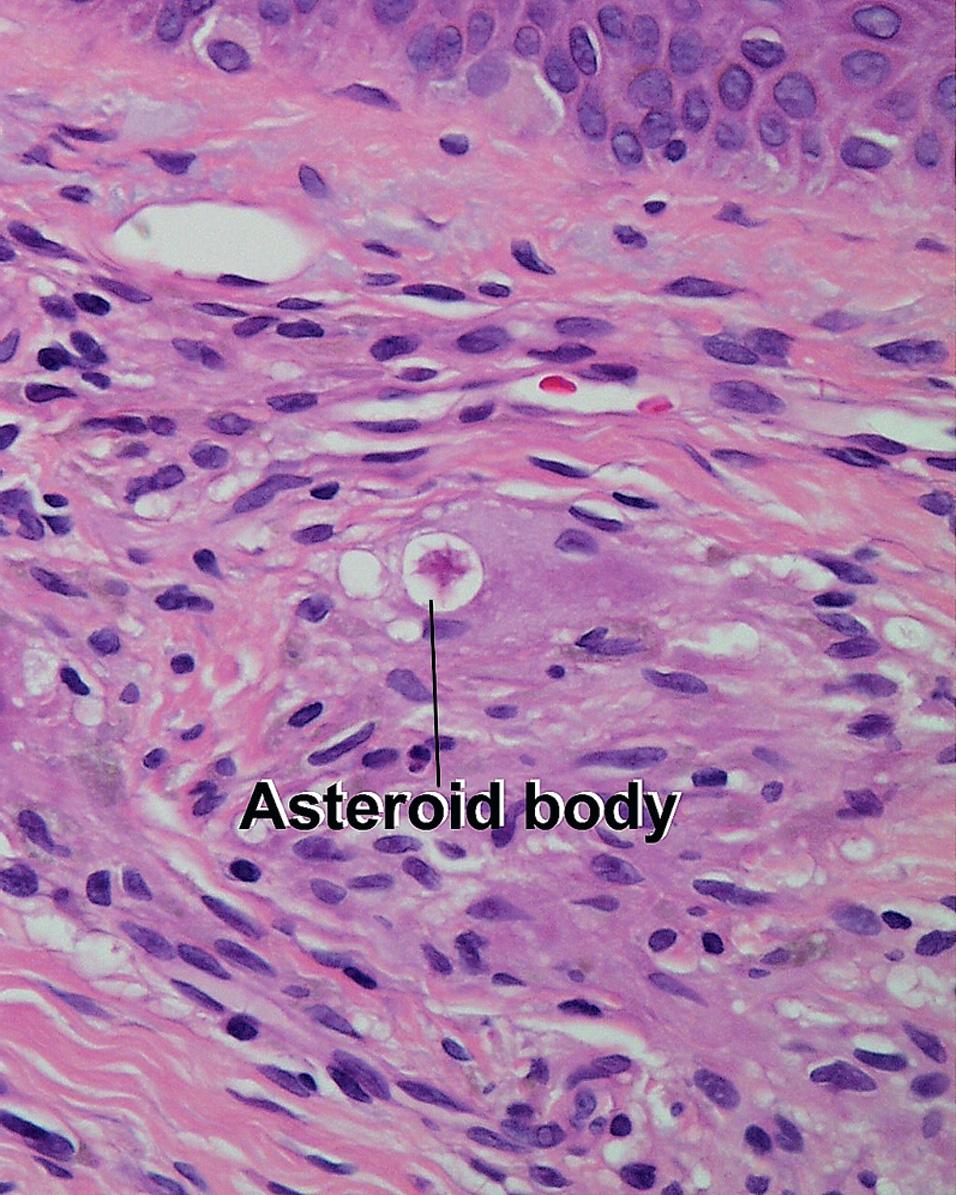
Decrease in thickness of epidermis
Destruction of epidermis by dissolution of cell attachments and intracellular edema
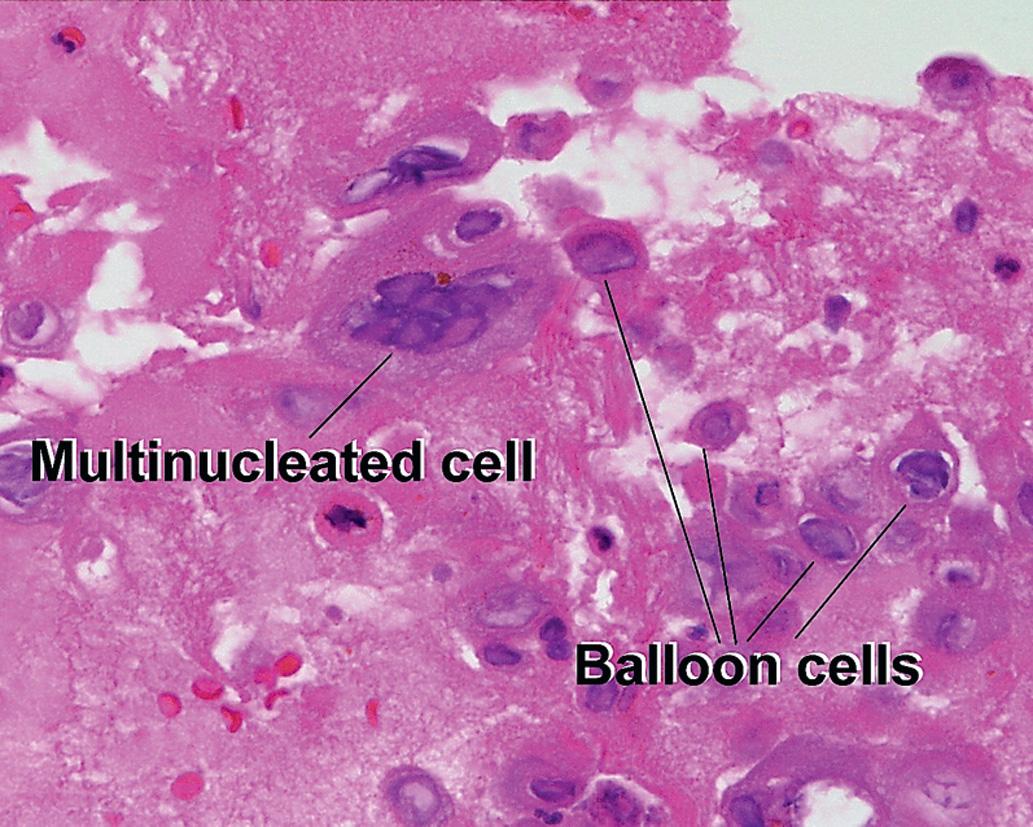
Pale pink linear basement membrane material within epidermis, seen in porphyria cutanea tarda
Represents degenerated type IV collagen
Pink, globular remnants of keratinocytes
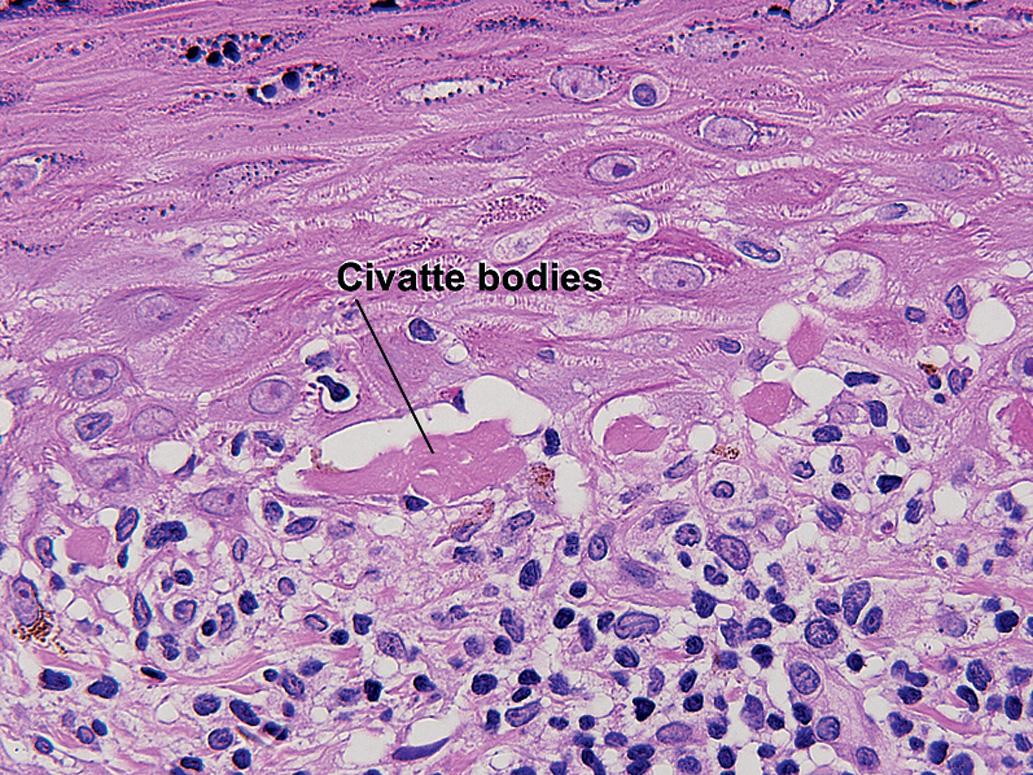
Collagen fibers surrounded by histiocytes/spindle cells (collagen balls)
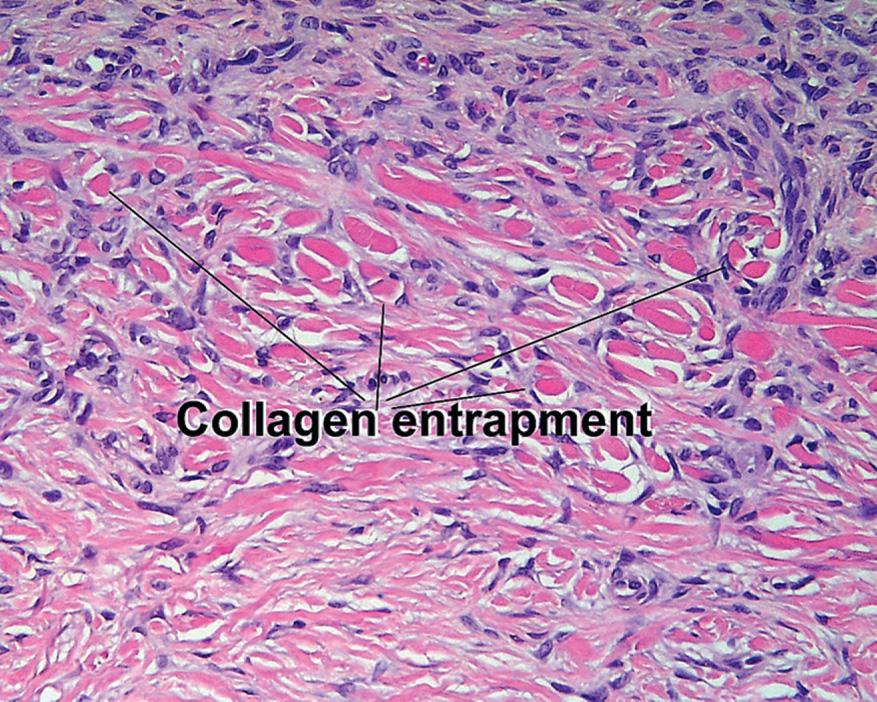
Forty-five–degree angle parakeratosis in a column above a focus with a diminished granular layer and underlying dyskeratotic cells
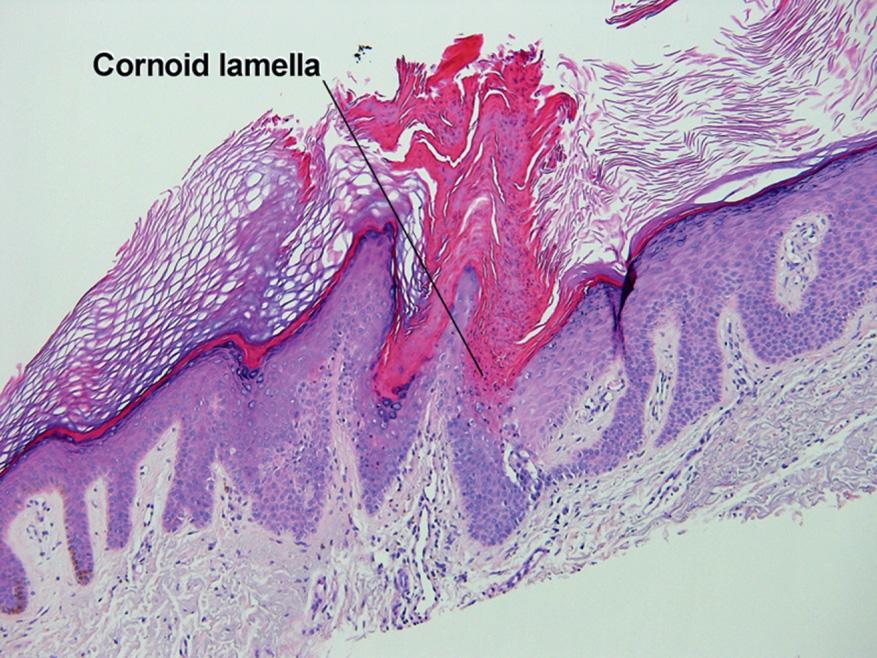
Corps ronds = rounded nucleus with halo of pale to pink dyskeratotic cytoplasm
Grain = dark blue flattened nucleus surrounded by minimal cytoplasm
Dyskeratosis = abnormal, individual-cell keratinization
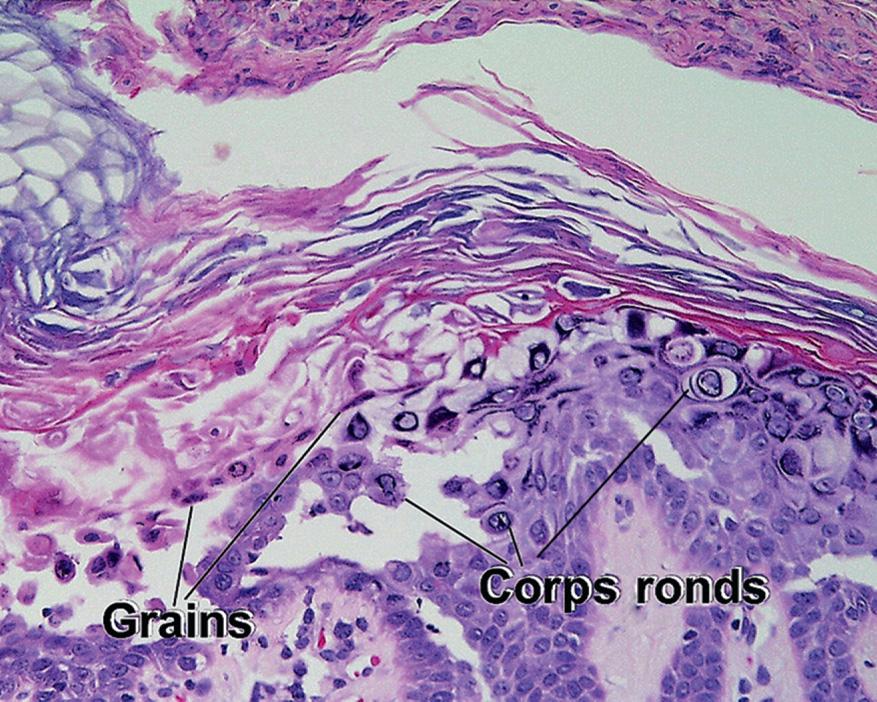
Also known as the Lipschutz body
Intranuclear pink inclusions of herpesvirus infection
Intranuclear pink inclusions of adenovirus and poliovirus infection
Serum/fluid with inflammatory cells/debris in stratum corneum
Intracytoplasmic collections of bacteria seen in granuloma inguinale
Intracytoplasmic pink masses of immunoglobulin that invaginate into the nucleus of plasma cells and appear to be intranuclear
Loss of normal rete pattern
Spongiosis with eosinophils in the epidermis
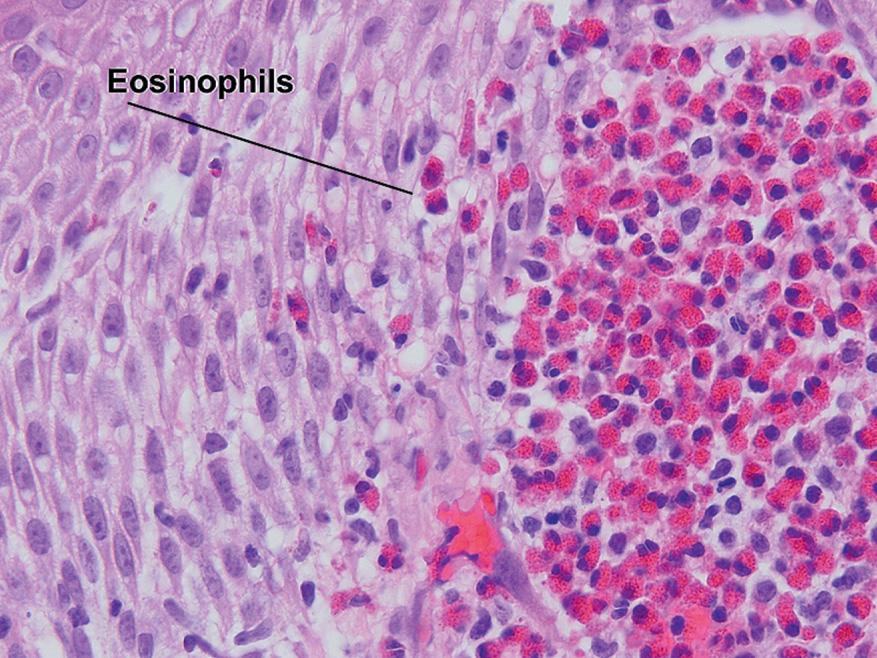
Coarse, irregular hypergranulosis associated with disruption of cell membranes
Associated with keratin 1 and 10 mutations
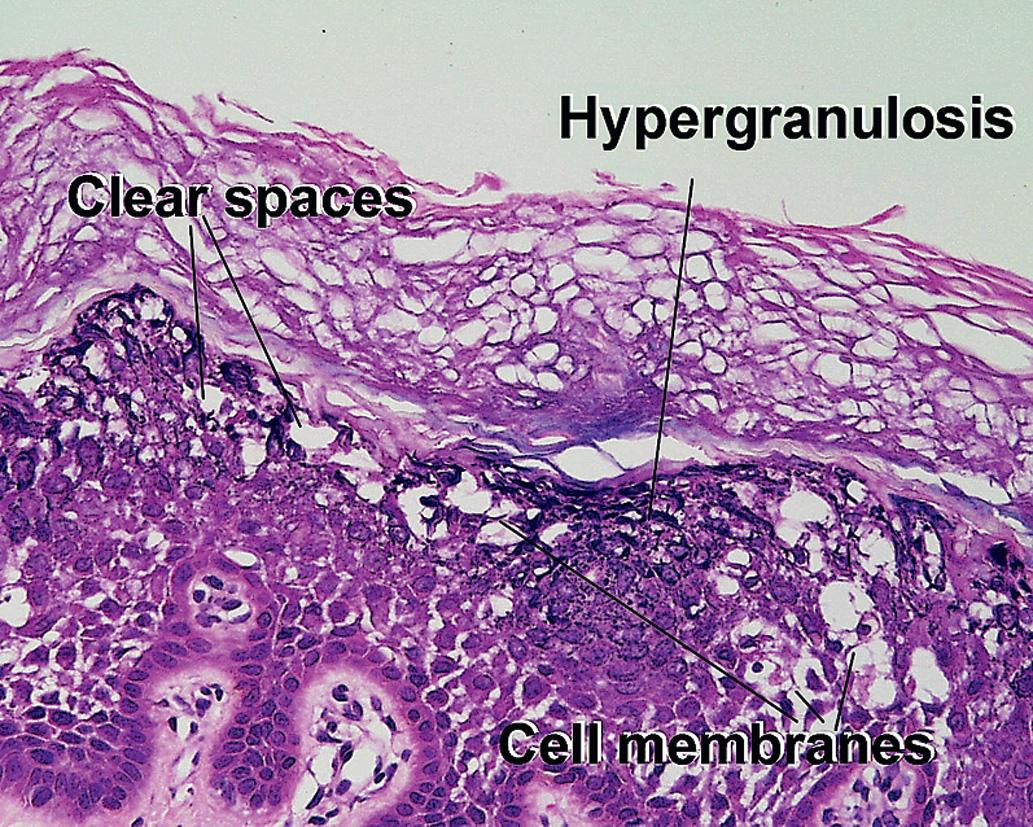
Lymphocytes in epidermis with relative absence of spongiosis; term usually reserved for mycosis fungoides
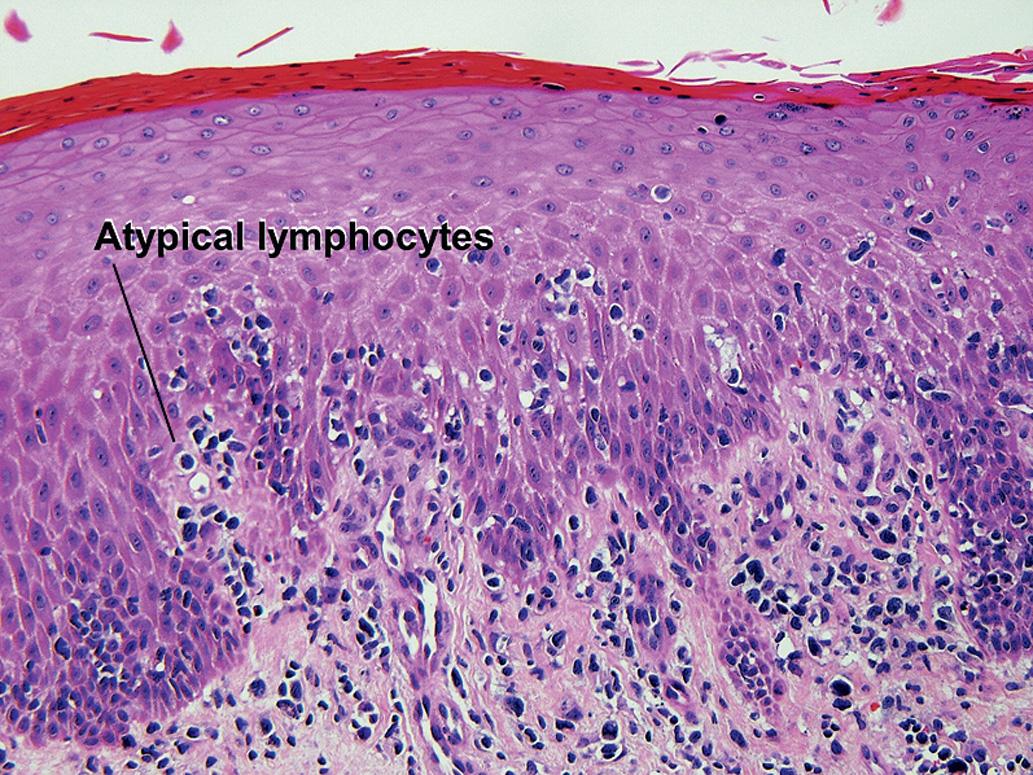
Partial thickness loss of epidermis
Lymphocytes in the epidermis with associated spongiosis; term usually used when discussing spongiotic dermatitis
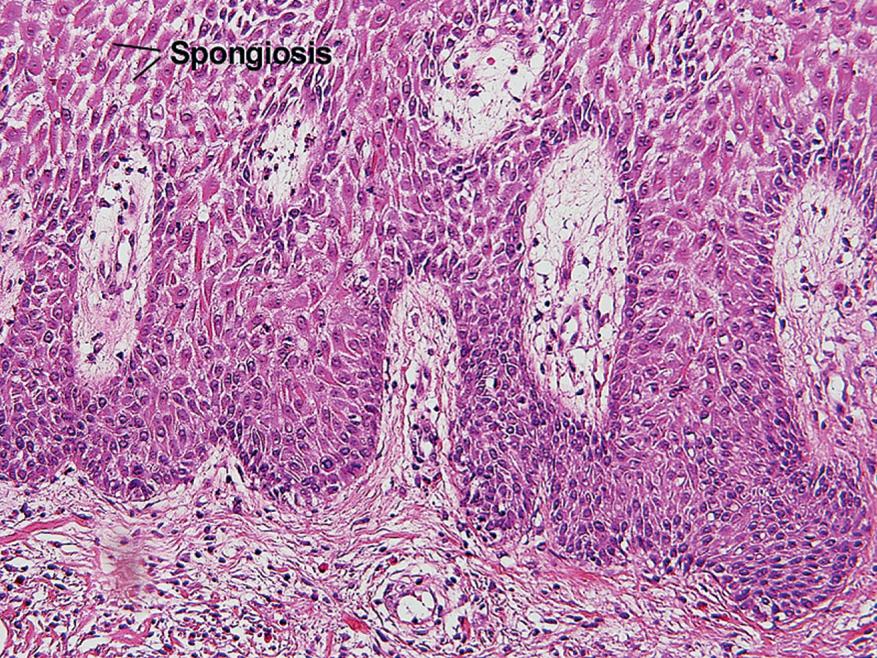
Papillary dermis retains an undulating pattern (often used to describe porphyria cutanea tarda)
Collagen encrusted with major basic protein from eosinophils
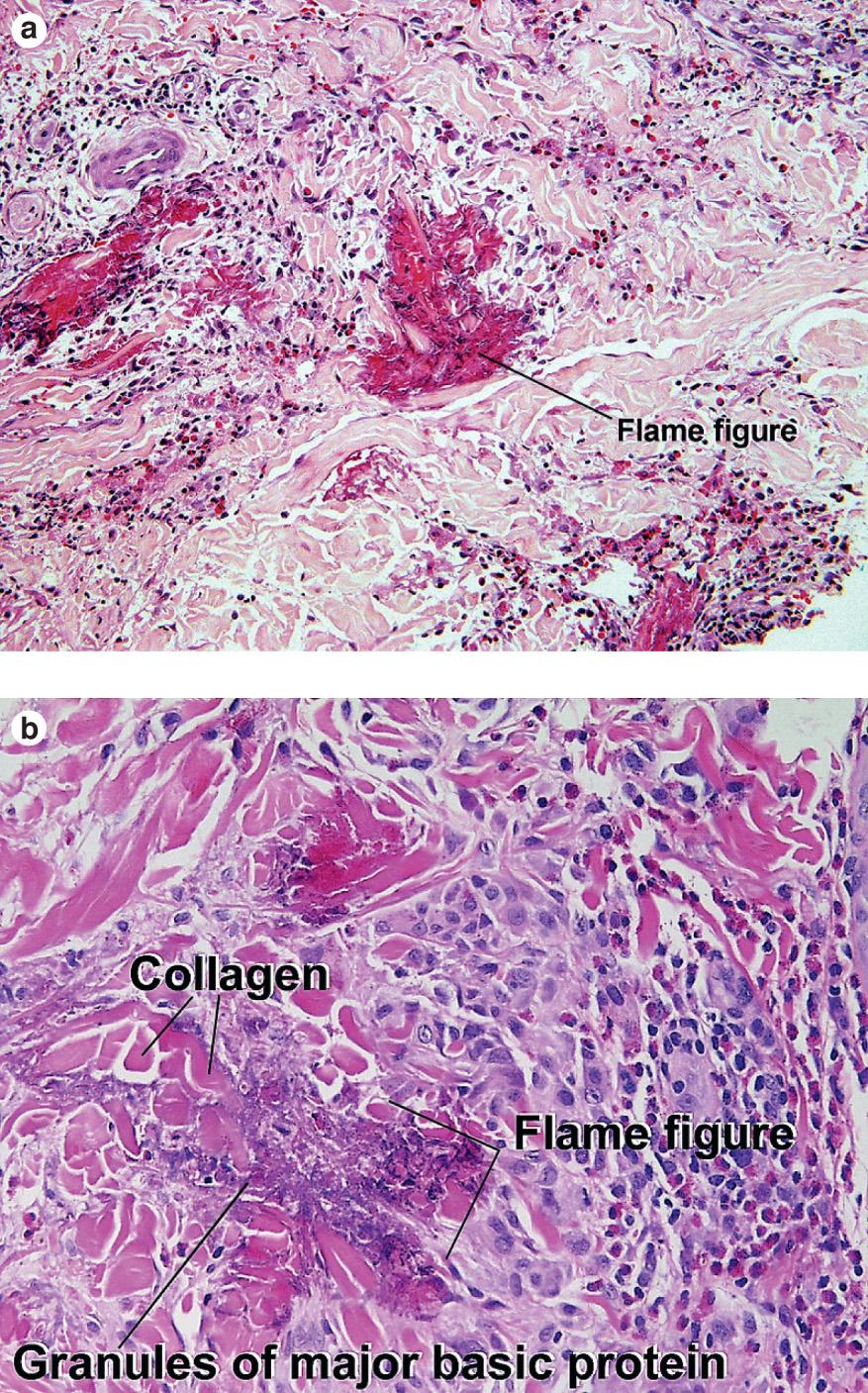
Lipid-laden histiocyte
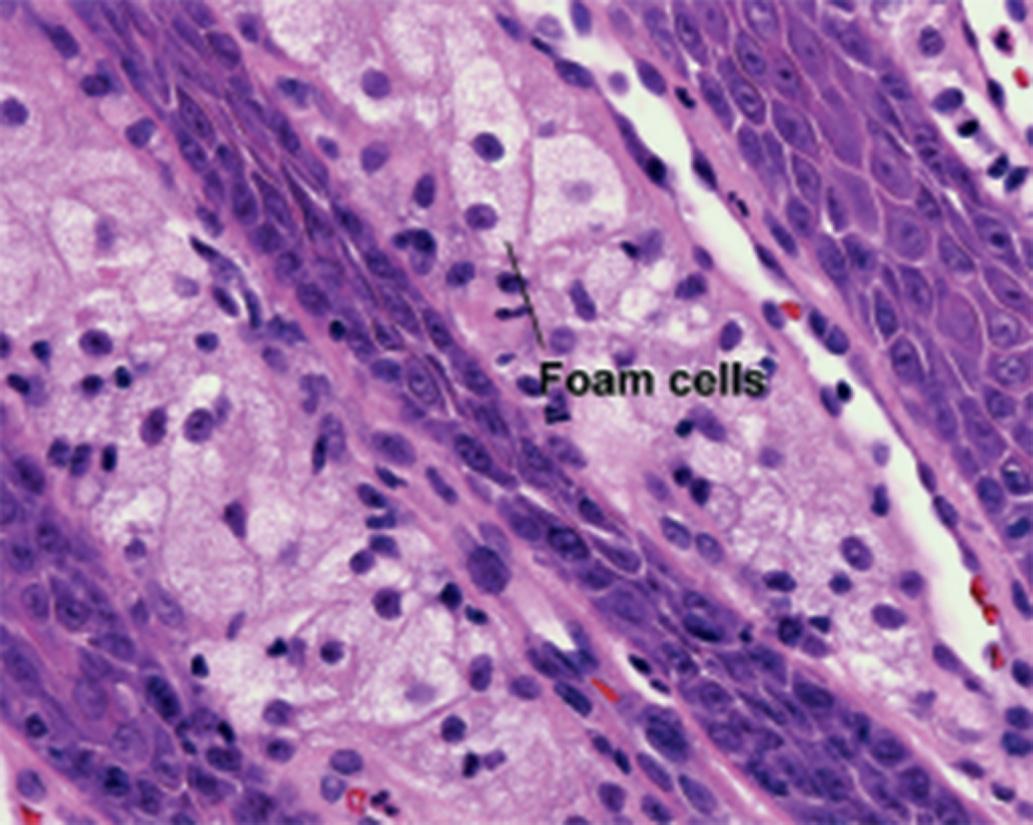
Alteration of hair sheath anatomy by pools of mucin
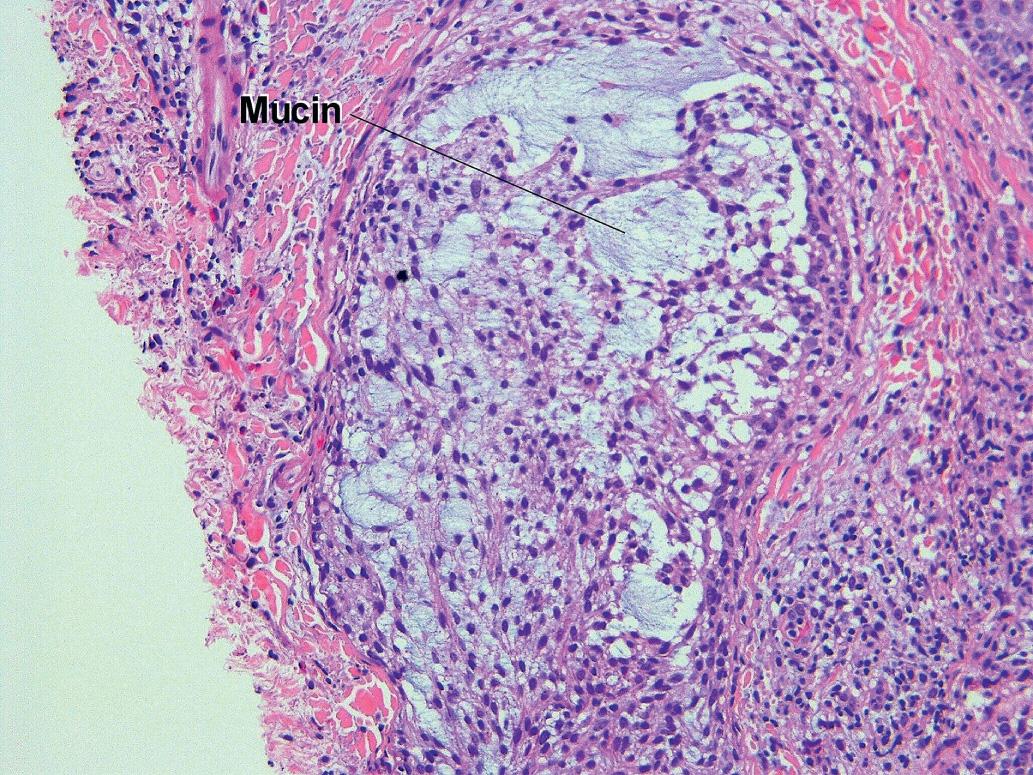
Composed of granulomas (collections of histiocytes)
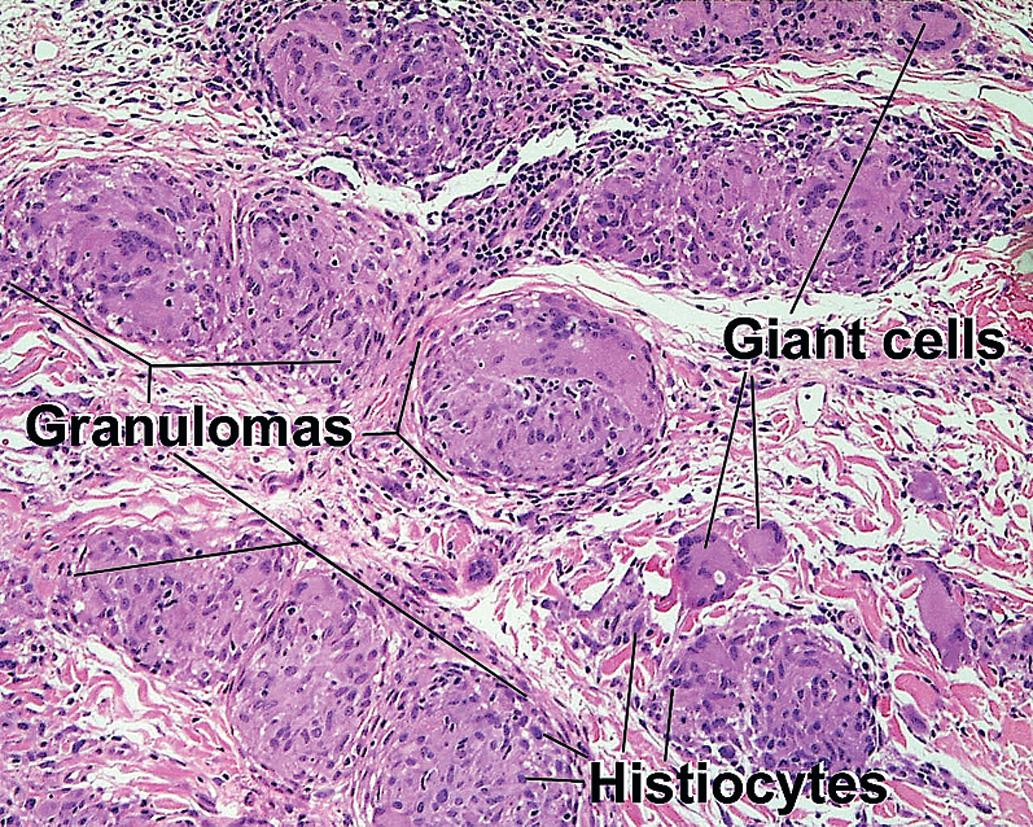
Uninvolved area of dermis beneath the epidermis or adjacent to a hair follicle (border zone)
Eosinophilic inclusions of smallpox
Intracytoplasmic oval, pink inclusions of molluscum infection
Increased/decreased granular layer
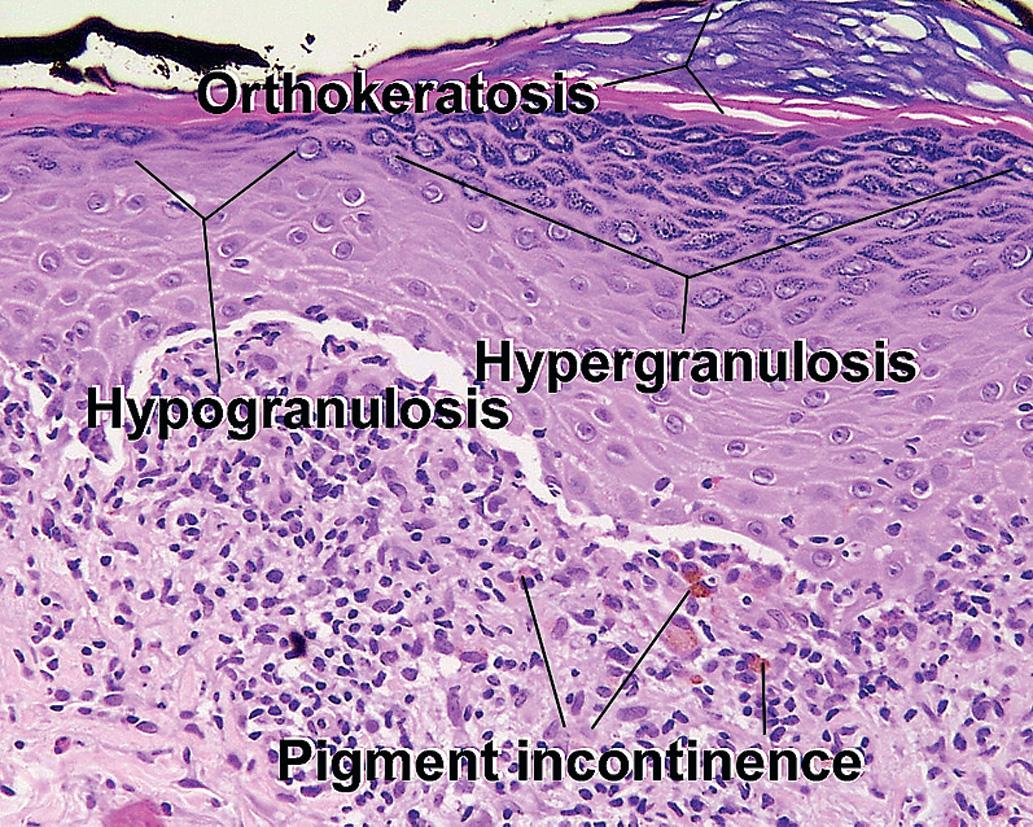
Increased/decreased melanin pigment
Generally refers to the dermoepidermal junction
Dull pink to amphophilic basement membrane material within the epidermis in a Spitz nevus
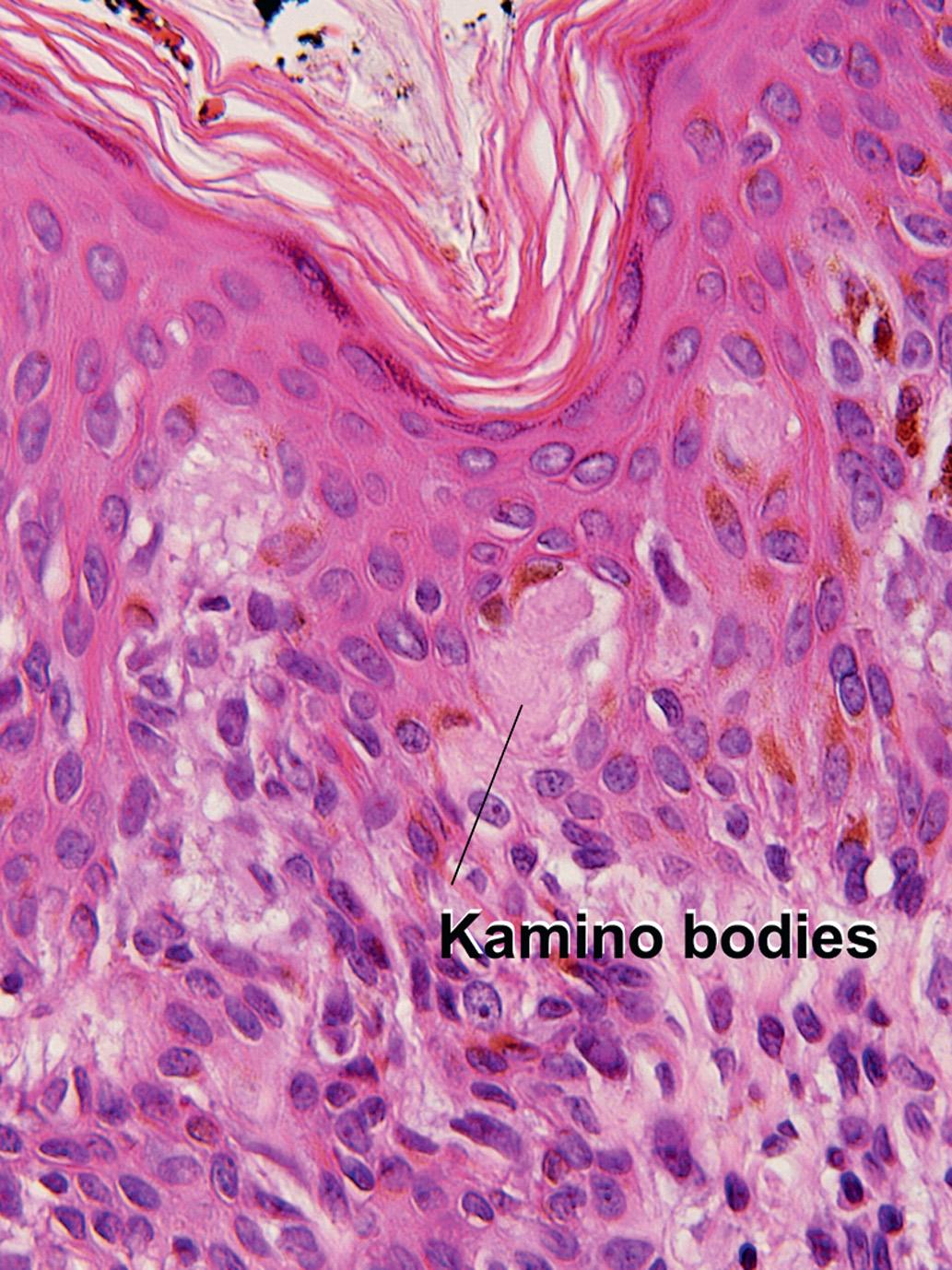
Fragmentation of neutrophils (leukocytoclasis). (If neutrophils resemble ants with segmented bodies, then karyorrhexis resembles dismembered ants and scattered ant heads)
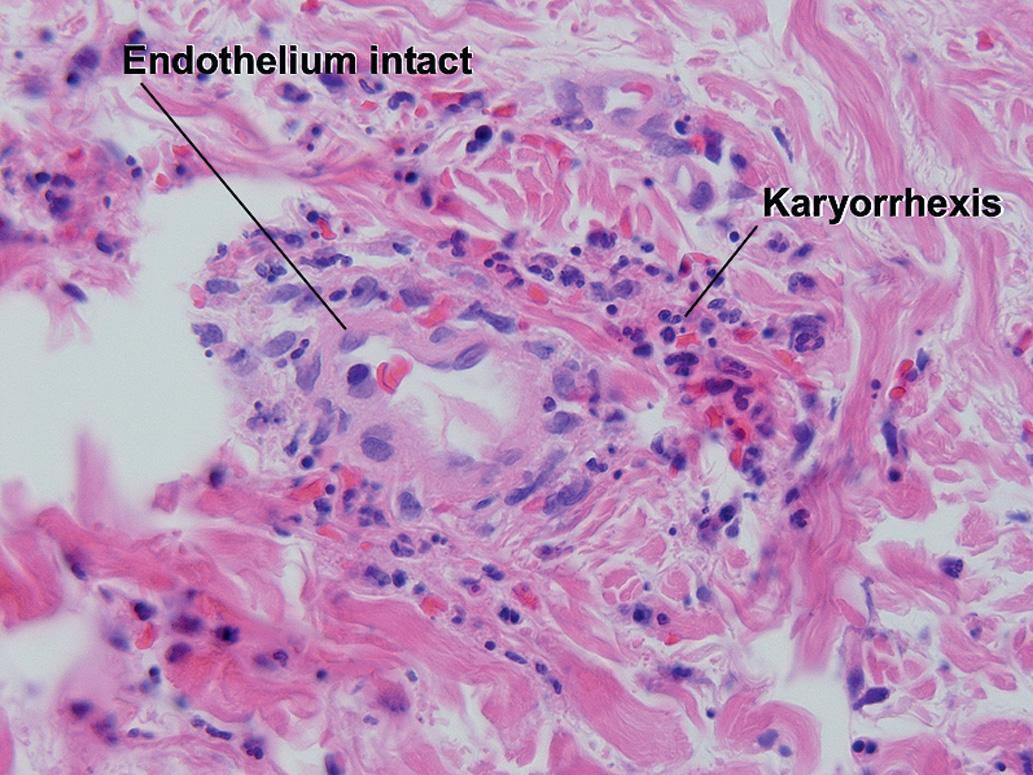
Keratinocytes with clear cytoplasm and shrunken “raisinlike” pyknotic nuclei
Intracytoplasmic collections of amastigotes in leishmaniasis
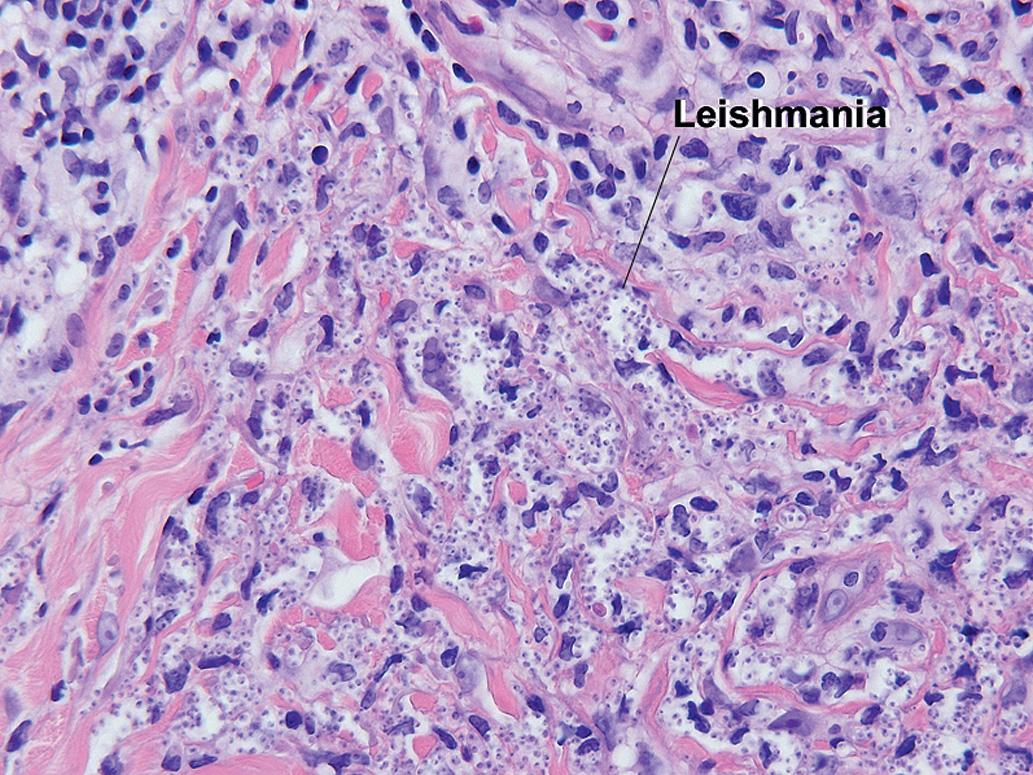
Elongated bulbous rete
Proliferation predominantly along the dermoepidermal junction
Fragmentation of neutrophils, also referred to as karyorrhexis
A bandlike infiltrate, generally composed predominantly of lymphocytes, located at the dermoepidermal junction
Brown, round structure resembling overlapping copper pennies
Divide by septation, resembling a hot-cross bun
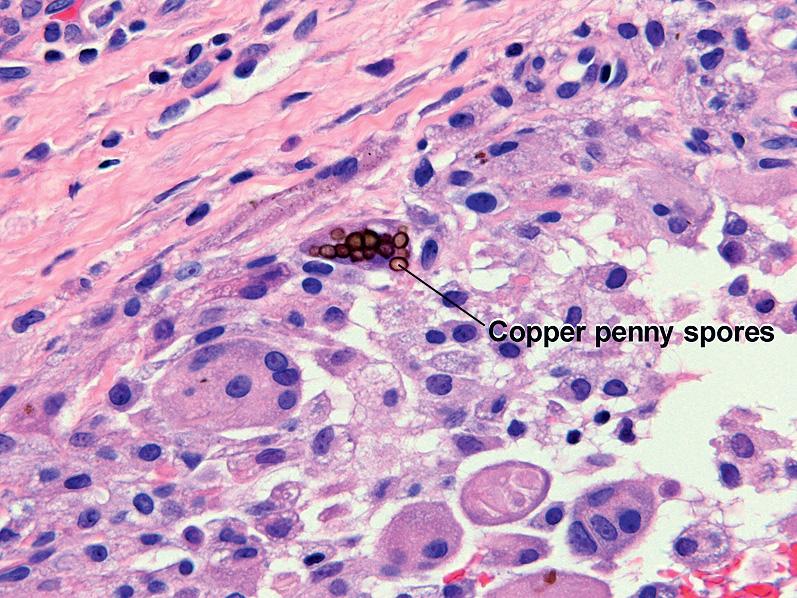
The property of staining a different color from the stain itself (i.e., the purple color of mast cell granules with the blue stain methylene blue)
Intracellular and extracellular calcified, concentric circular structures, seen in malakoplakia
Collection of neutrophils in the stratum corneum, as seen in psoriasis
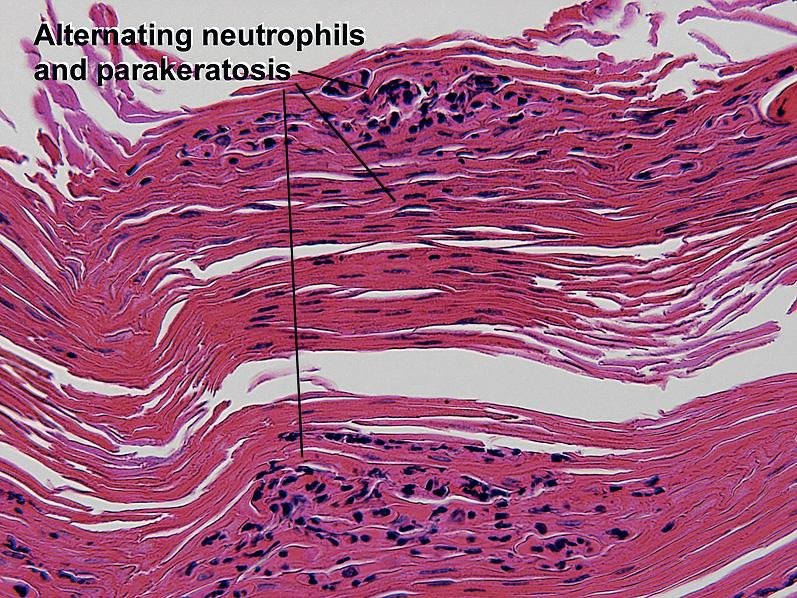
Pale-staining, smudged, necrotic collagen
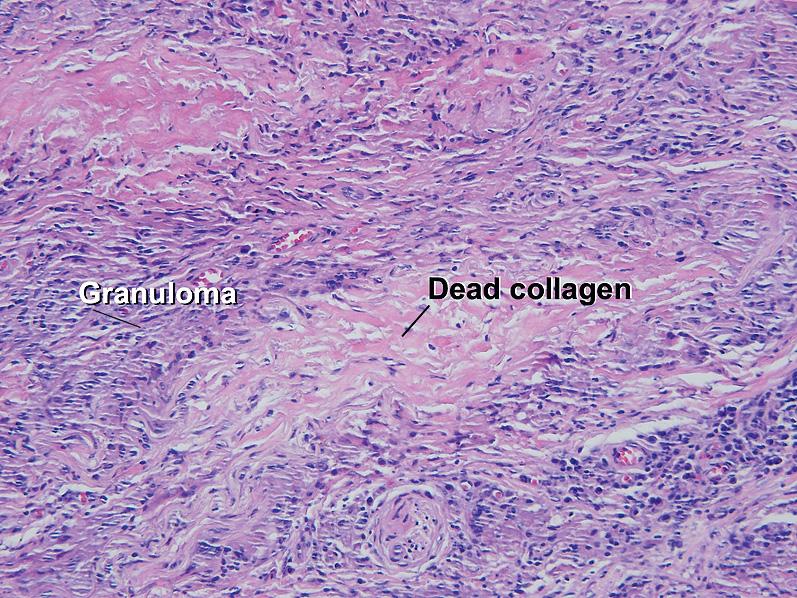
Inclusions within neurons seen in rabies infection
Stratum corneum without retained nuclei
Large cells with abundant cytoplasm within the epidermis
Buckshot scatter of atypical cells within the epidermis
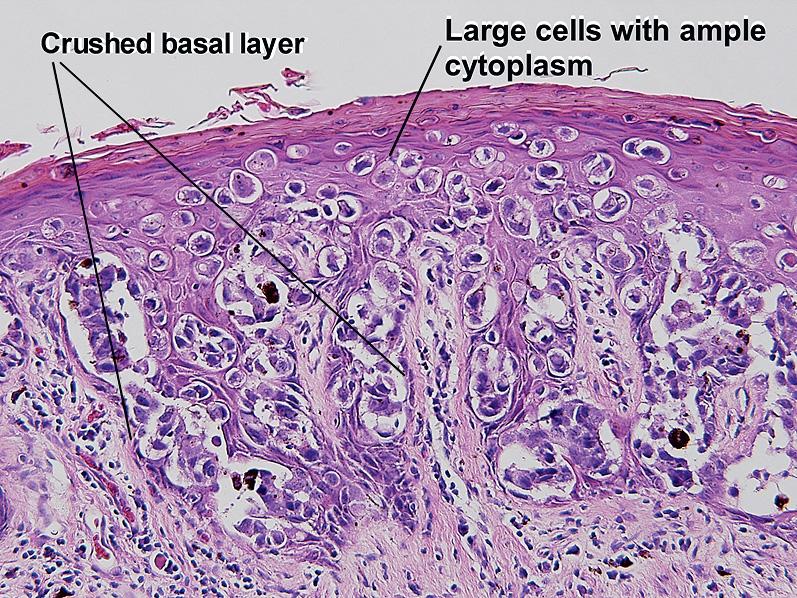
Picket fence–like arrangement at the periphery
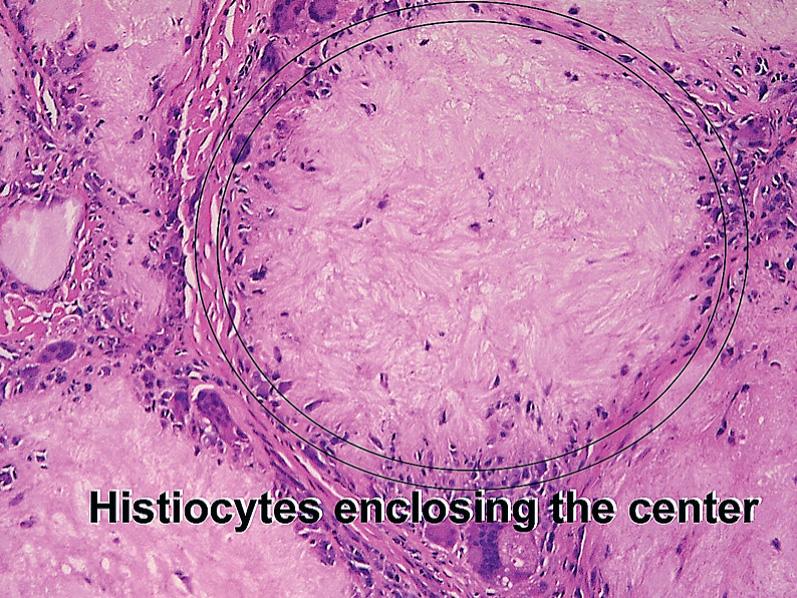
Structure that resembles the whorl of plump mesenchymal cells normally present in the hair papilla (seen in trichoblastoma and trichoepithelioma)
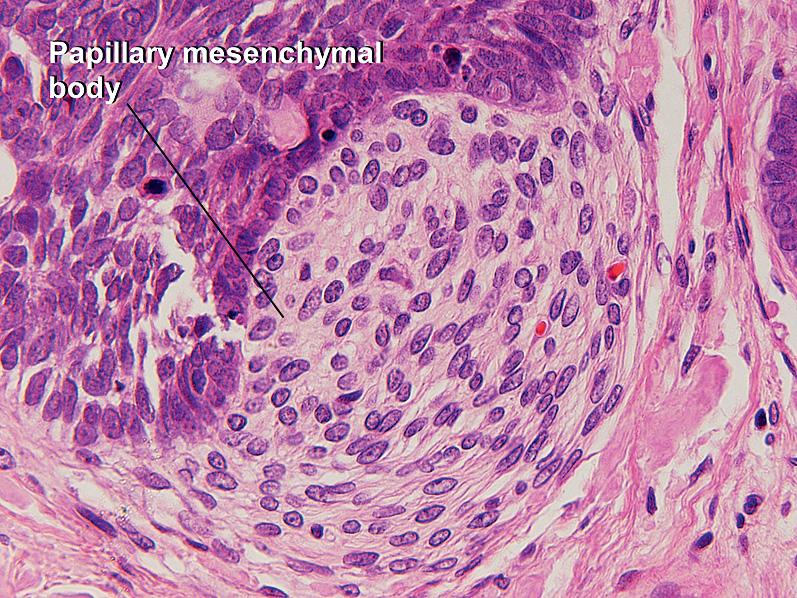
Exophytic fingerlike projections
Stratum corneum with retained nuclei
Melanin within dermal macrophages and free within the dermis
Variation in nuclear size/shape
Extracellular laminated, calcified structures seen in meningioma, papillary thyroid carcinoma, and ovarian carcinoma
Prominent acanthosis of the adnexal epithelium and epidermis, mimics squamous cell carcinoma
Often associated with trapping of elastic fibers
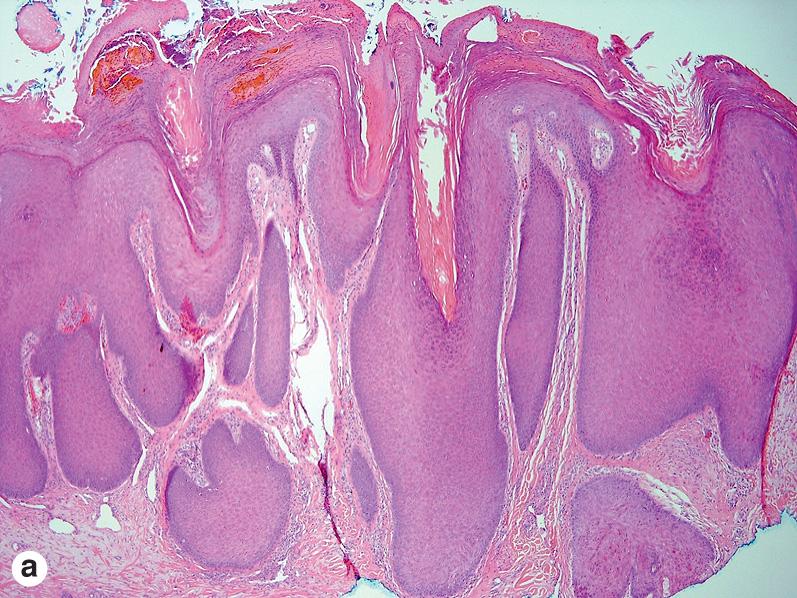
Keratin-filled cystic structure that is the result of cutting through invaginations of the stratum corneum (similar to a horn cyst, but connects to the surface)
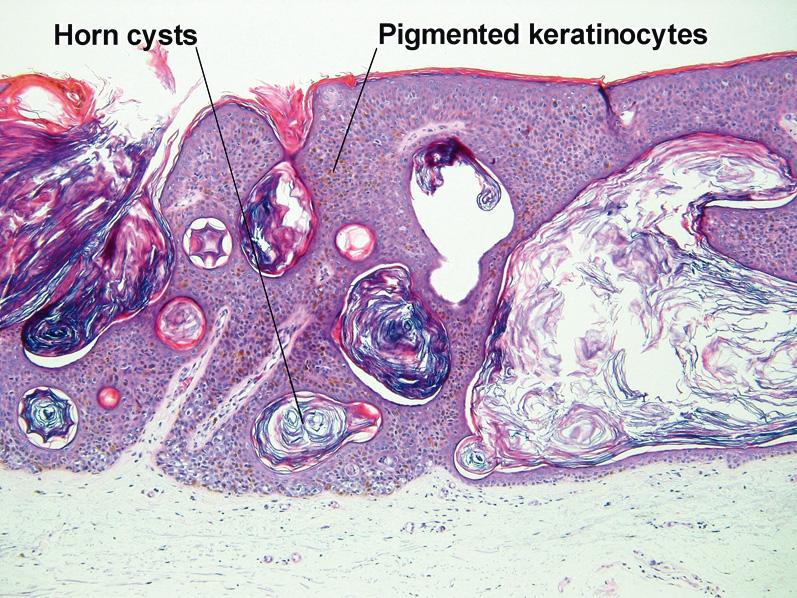
Destruction of epidermis with cell membranes remaining in a netlike pattern
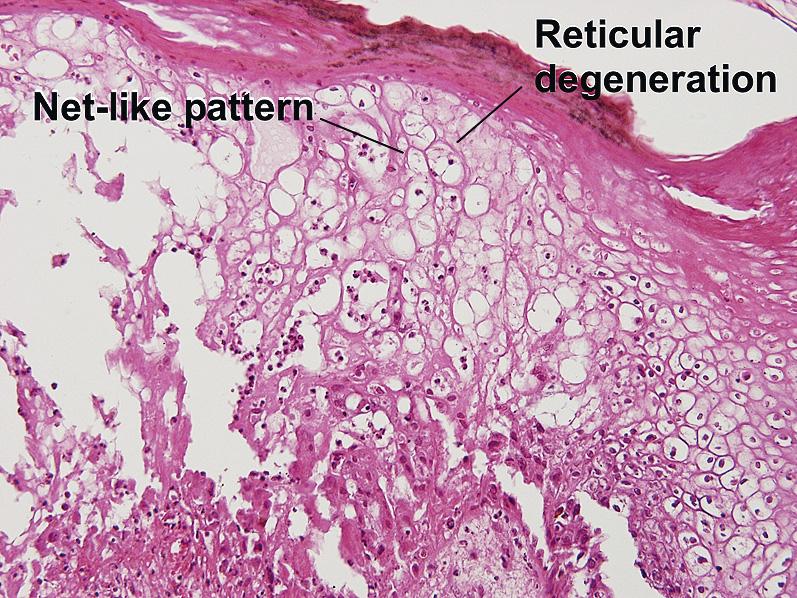
Network of interconnecting strands (netlike)
Intracytoplasmic pink collections of immunoglobulins in plasma cells, seen in rhinoscleroma and other conditions with many plasma cells
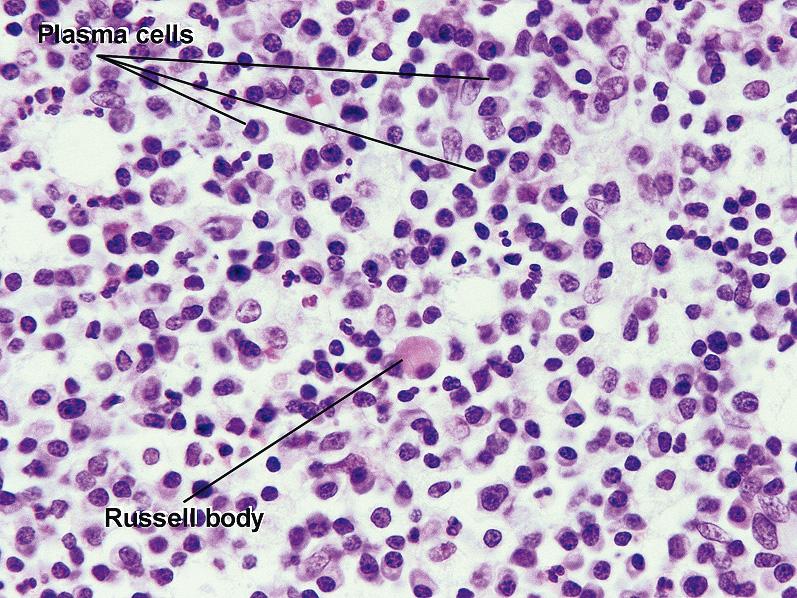
Laminated calcified structure seen in sarcoidosis
Cells with barely visible outlines of nuclei
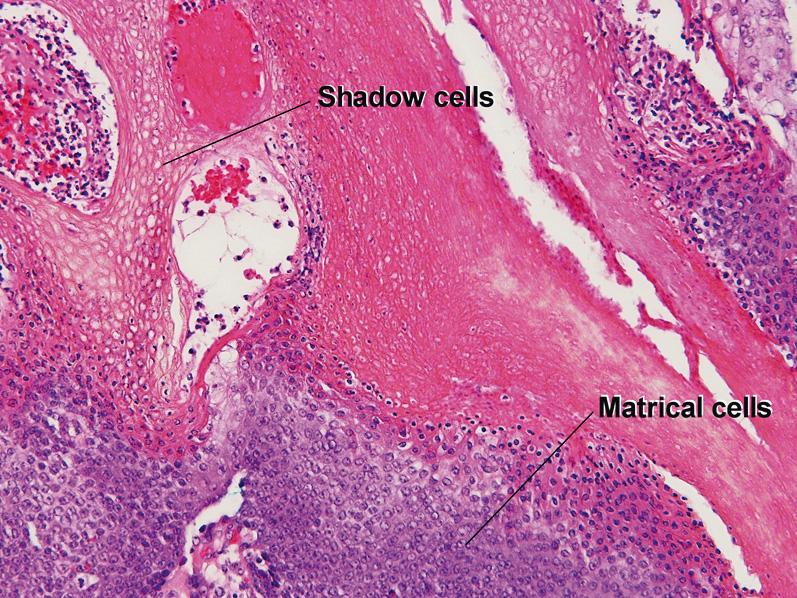
Neutrophils in the stratum spinosum, associated with spongiosis at the periphery (typical of psoriasis)
Intercellular edema in epidermis with stretching of cell–cell junctions ( Fig. 1.14 )
Loss of cuboidal/columnar basal cells, with deepest layer now being polyhedral, pink squamous cells
Circular whorls of squamous cells
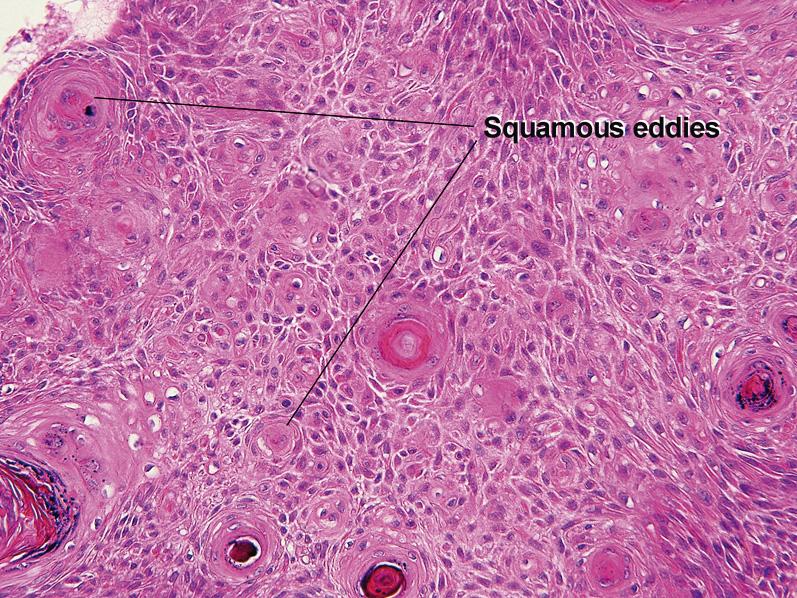
Cartwheel or loosely whorled pattern
Formation of clear spaces within the basal layer
Structure composed of two nuclear palisades enclosing pink cytoplasmic processes, seen in schwannoma
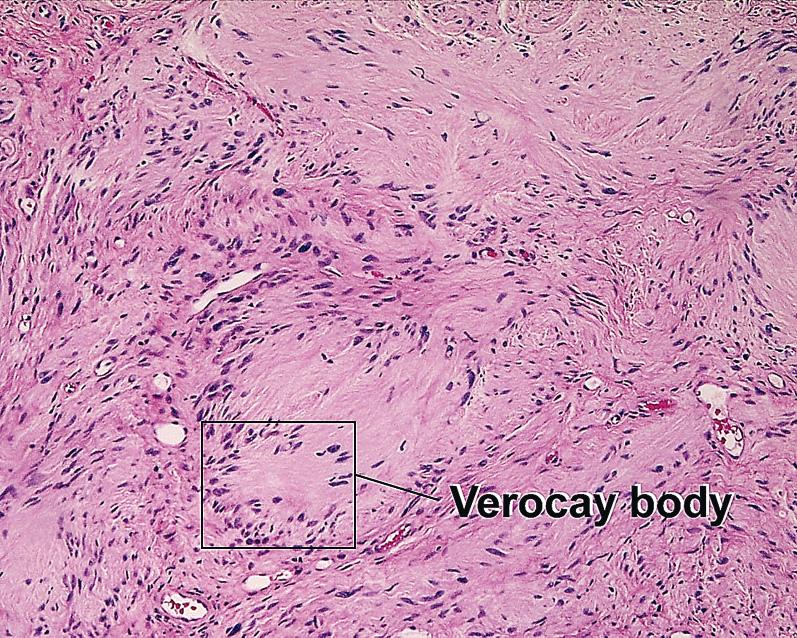
Projection of papillary dermis covered by a layer of epidermal cells into a cavity
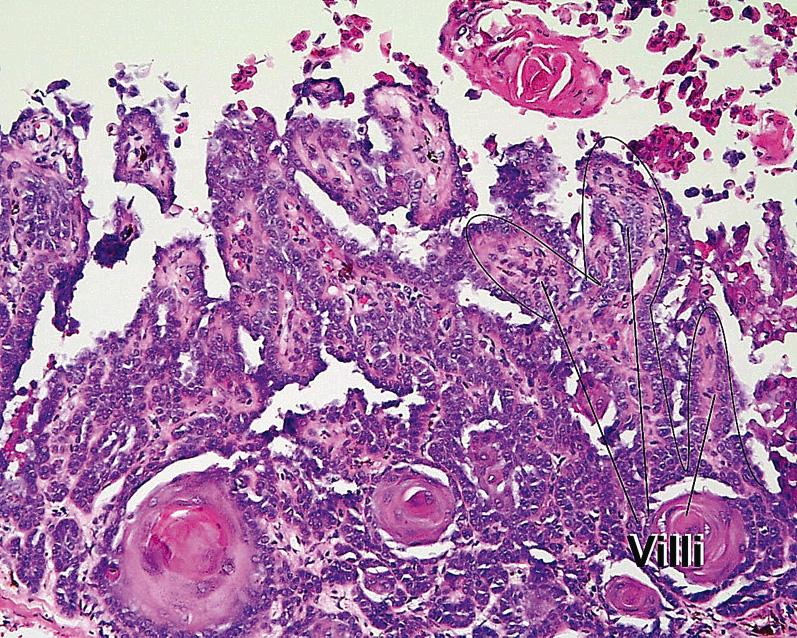
Become a Clinical Tree membership for Full access and enjoy Unlimited articles
If you are a member. Log in here